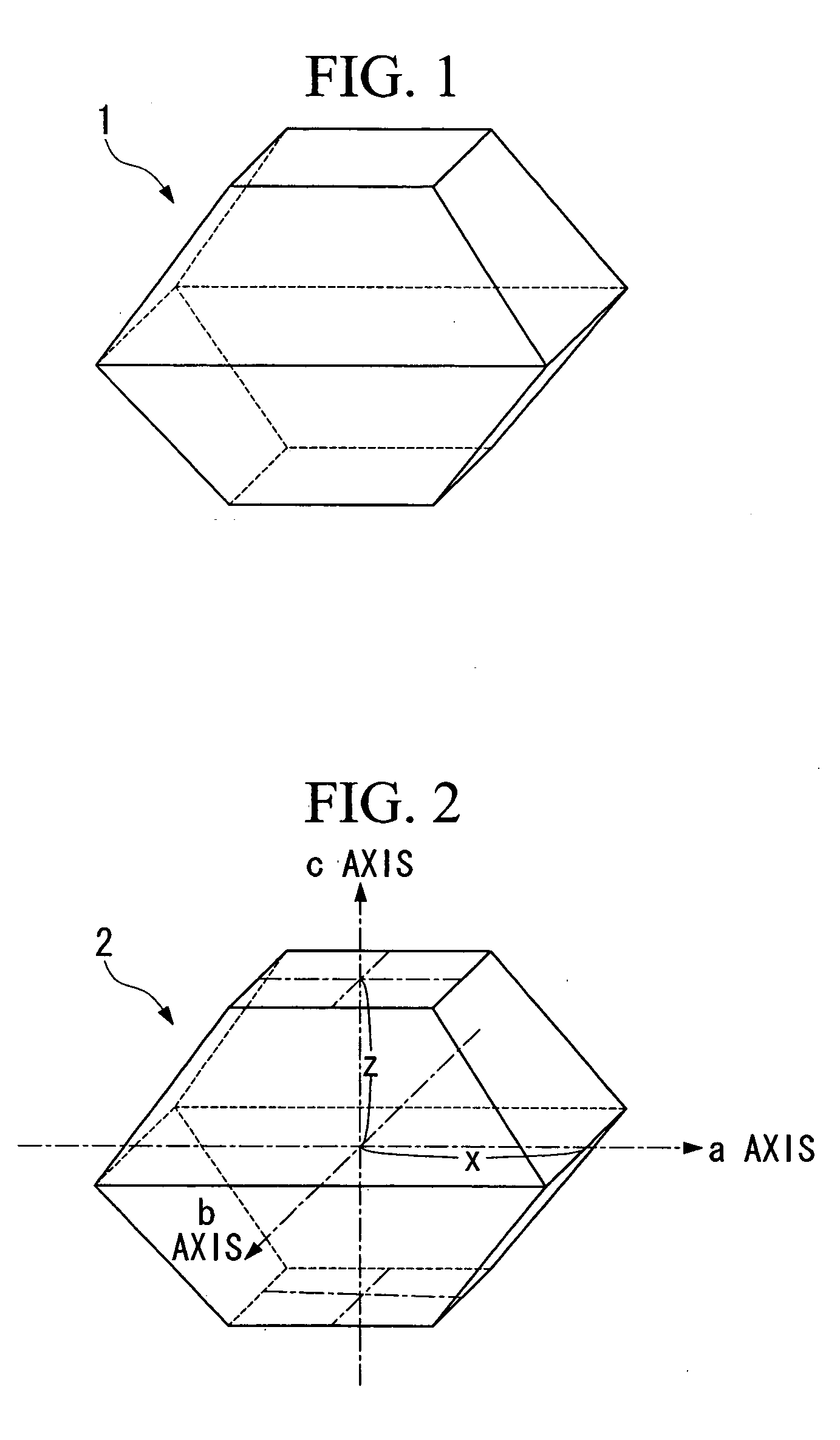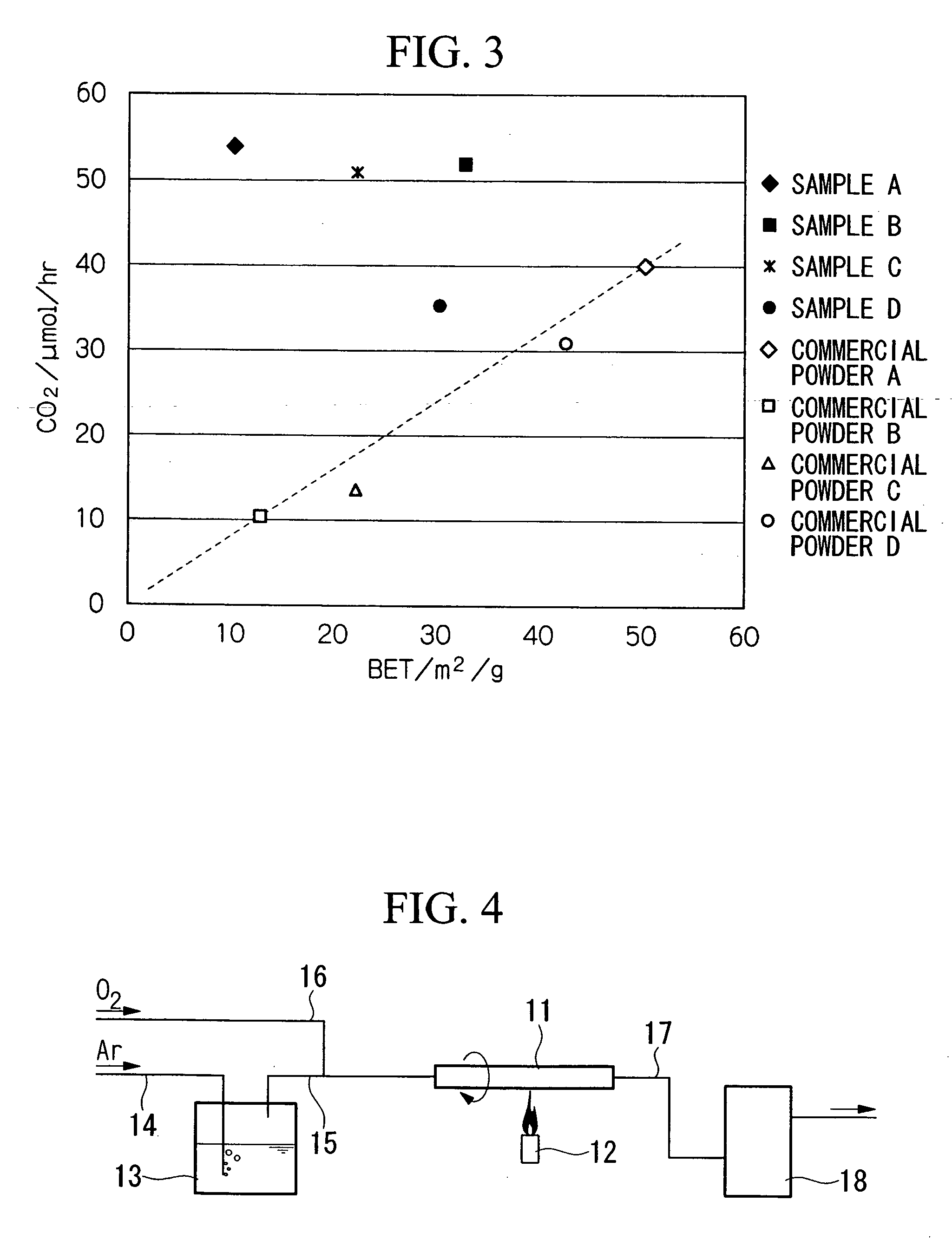Particulate titanium oxide, method and apparatus for manufacturing the same, and treatment methods using such titanium oxide
a titanium oxide and titanium oxide technology, applied in the field of particle titanium oxide, can solve the problems of lowering the photocatalytic activity, affecting the recombination rate of excited electrons and holes, and sometimes encountering problems such as dispersibility, and achieves no decline the effect of high photocatalytic activity and no drop in the photocatalytic activity
- Summary
- Abstract
- Description
- Claims
- Application Information
AI Technical Summary
Benefits of technology
Problems solved by technology
Method used
Image
Examples
example 1
[0170] Particulate titanium oxide was produced by a thermal oxidation process in which a reaction tube made of silica glass was used, oxyhydrogen burners were used as the heat source, titanium tetrachloride vapor and oxygen were introduced to the reaction tube, and heat was applied from outside the tube. The titanium tetrachloride vapor was fed with a bubbler, the bubbler temperature was set at 85° C., and the gas lines were held at a temperature of 140° C. Argon was used as the bubbling gas, and its flow rate was set at 180 sccm. The oxygen used as the reactant was set to a flow rate of 1,000 sccm, and the reaction temperature was set at 1230° C. Six oxyhydrogen flame burners were installed. The silica glass tube had an inside diameter of 32 mm and a wall thickness of 2.5 mm, and was rotated at a speed of 55 rpm.
[0171] The particles of titanium oxide thus obtained were in the shape of decahedrons like that shown in FIG. 1. The average particle size was 20 nm, and the particle size...
example 2
[0177] The particulate titanium oxide obtained in Example 1 was coated onto a silica glass plate and the photocatalytic activity when irradiated with ultraviolet light was evaluated.
[0178] Evaluation was carried out based on the ability of the particulate titanium oxide to decompose acetaldehyde under identical conditions. The concentration of carbon dioxide generated by such decomposition was measured, and the relationship of this concentration with the flatness ratio H of the polyhedrons making up the particulate titanium oxide was determined. FIG. 9 shows the change over time in the carbon dioxide concentration at titanium oxide catalysts having various flatness ratios. Those samples in which the polyhedrons had a flatness ratio of 1.01 or 1.58 had the highest activities, and those samples in which the flatness ratio was 0.53 or 2.16 had the next highest activities.
example 3
[0180] The particulate titanium oxide obtained in Example 1 was coated onto a silica glass plate, following which E. coli bacteria were applied. The glass plate was then irradiated with a black light and the change over time in the number of bacteria was studied. The results showed that it took 30 minutes for the number of bacteria to fall below 1% of the initial number.
PUM
| Property | Measurement | Unit |
|---|---|---|
| particle size | aaaaa | aaaaa |
| particle size | aaaaa | aaaaa |
| particle size | aaaaa | aaaaa |
Abstract
Description
Claims
Application Information
 Login to View More
Login to View More - R&D
- Intellectual Property
- Life Sciences
- Materials
- Tech Scout
- Unparalleled Data Quality
- Higher Quality Content
- 60% Fewer Hallucinations
Browse by: Latest US Patents, China's latest patents, Technical Efficacy Thesaurus, Application Domain, Technology Topic, Popular Technical Reports.
© 2025 PatSnap. All rights reserved.Legal|Privacy policy|Modern Slavery Act Transparency Statement|Sitemap|About US| Contact US: help@patsnap.com



